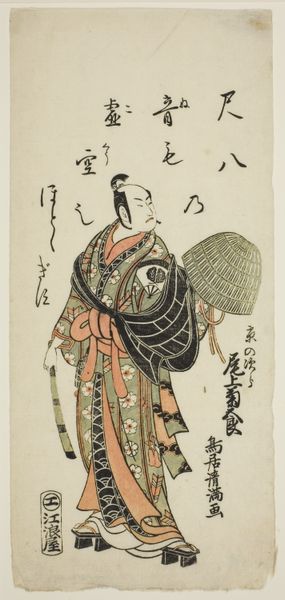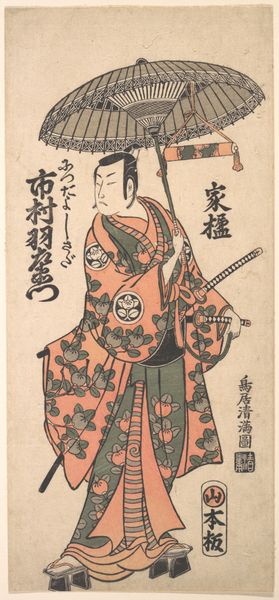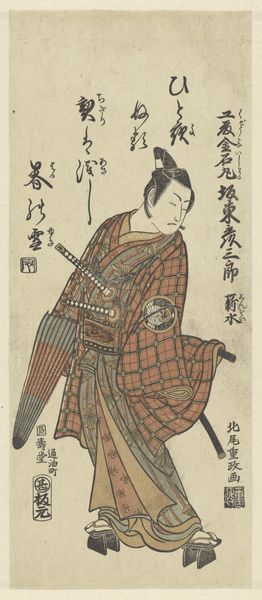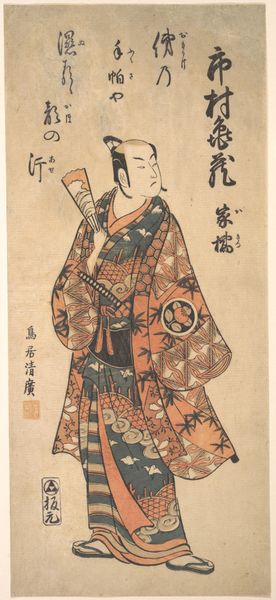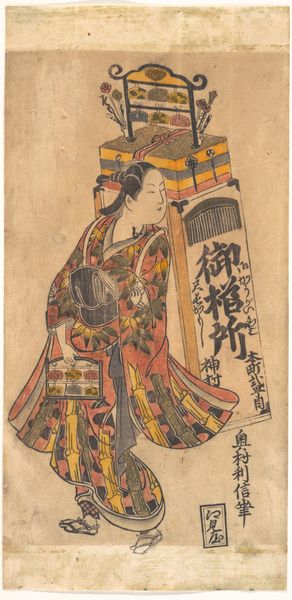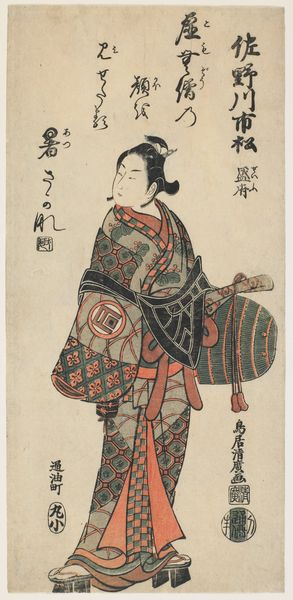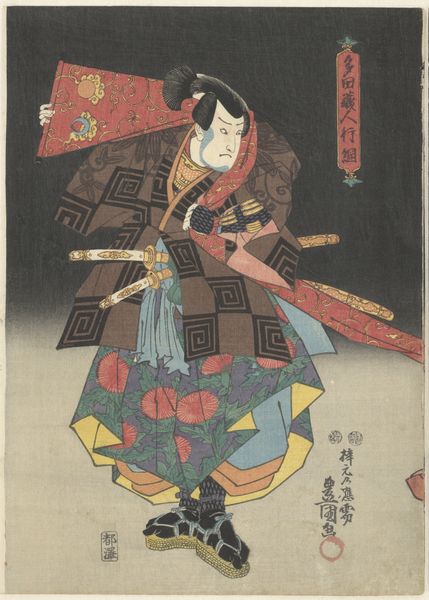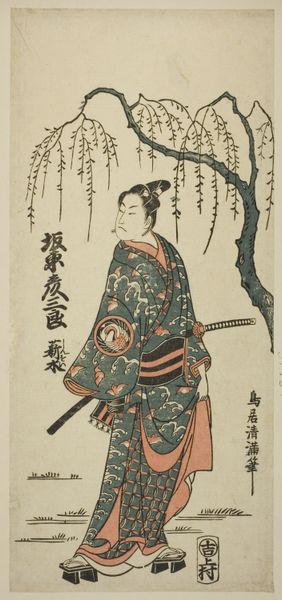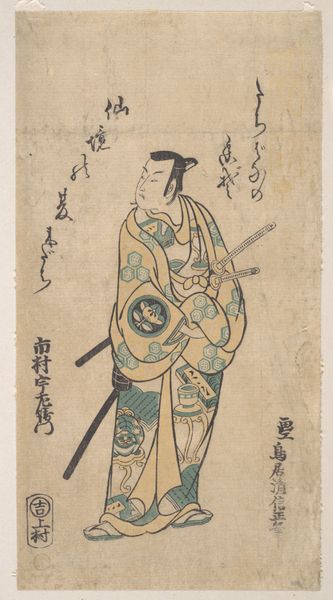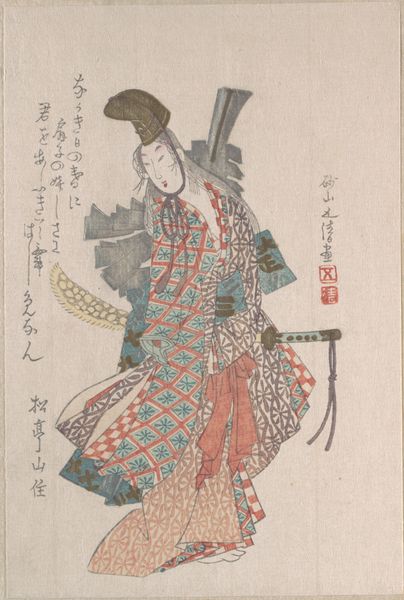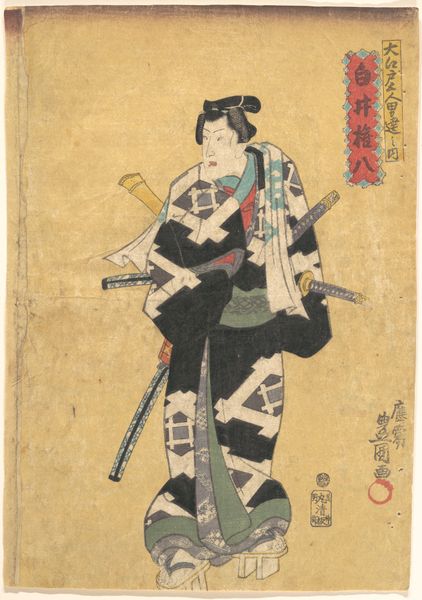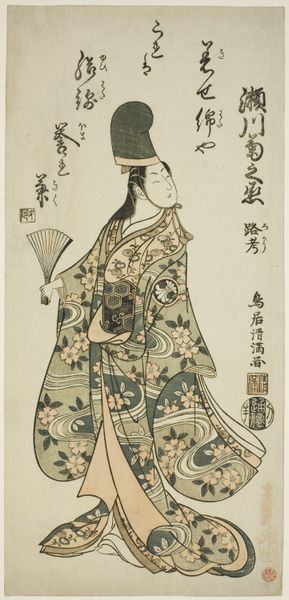
The Actor Bando Hikosaburo II Holding a Bow and Arrows 1766
0:00
0:00
print, woodblock-print
#
portrait
# print
#
asian-art
#
ukiyo-e
#
figuration
#
woodblock-print
Dimensions: 15 x 7 in. (38.1 x 17.8 cm)
Copyright: Public Domain
Curator: Woodblock printing—ukiyo-e— allowed for the relatively rapid reproduction and dissemination of imagery in 18th-century Japan, and it's critical to remember the means of its production. What are your initial thoughts on this image? Editor: This is "The Actor Bando Hikosaburo II Holding a Bow and Arrows" by Torii Kiyomitsu, created in 1766. It's a woodblock print currently held at the Metropolitan Museum of Art. I’m really struck by the patterns of his robe – the repeating wave and bird motifs are captivating. How do you interpret this work within its cultural context? Curator: It's easy to be drawn to the aesthetic elements, isn't it? But let’s dig deeper into its creation and consumption. Ukiyo-e prints weren't "high art" in the traditional sense, even though they demand a specific carving and printing skill. This print, for example, served as advertising – circulating images of popular Kabuki actors among a wide audience to cultivate celebrity culture, as well as disseminate fashion styles with the clothing of famous actors. Do you think this changes how we understand it? Editor: Absolutely. Thinking of it as advertising shifts my understanding. So, the detailed patterns on the actor’s robe weren’t just decorative, but possibly designed to appeal to consumers and promote specific textile production or fashion trends of that moment. Curator: Precisely. And think about the role of the artisan crafting the blocks, and the economic structure enabling the proliferation of these images. Examining the production, dissemination, and consumption of such art provides significant insights into the societal values. What have you learned about approaching art by considering its materiality and social context? Editor: I'm starting to see that understanding the ‘how’ and ‘why’ behind the art making reveals a much richer, layered history than just focusing on aesthetics alone.
Comments
No comments
Be the first to comment and join the conversation on the ultimate creative platform.
